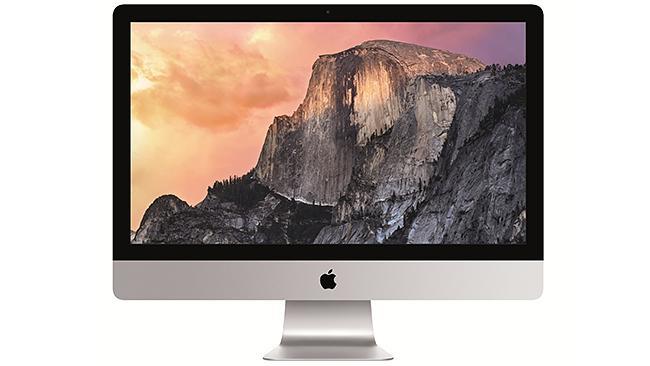Apple announces new 4K and 5K iMacs with Australia pricing
Australians will have to pay more for Apple’s new 27-inch 5K desktop computer, announced overnight.

Australians will pay at least $800 more for new 27-inch 5K iMacs announced by Apple overnight due to the declining Australian dollar, than they would have paid had there been parity.
The announcement included a new 21.5-inch 4K iMacs, and a swag of accessories.
While the bad news is the increasing cost of Australian tech due to the dollar, currently at about $US0.73, the good news is that Apple is heavily embracing 4K and 5K ultrahigh definition displays, making them more of a standard item across the iMac range.
In this year’s line-up there are now three 21.5-inch iMac models, and for the first time, Apple has included a 4K display on one of them with a screen resolution of 4096x2304 pixels.
The displays on the new iMacs have a wider colour gamut which means they are able to show an increased range of colours. Updated iMacs have more powerful 6th generation Intel Skylake processors and graphics, two Thunderbolt 2 ports, and new storage options.
One Terabyte of storage is the entry level throughout, with the high-end 27-inch iMac having a 2 TB fusion drive, which on other models is optional. The 5K display on the 27-inch models is 5120x2880 pixels.
In the US, iMac pricing remains the same as last year’s models, $US1099 to $US1499 for the three 21.5-inch models and $US1799 for the low end 27-inch iMac - the only 27-inch iMac then, but Australian pricing has increased.
Locally the three 21.5-inch iMac configurations will cost from $1699, $1999 and $2299, with 27-inch iMacs, all with 5K displays, costing from $2799, $3099 and $3599. The $2799 price, for example, is arguably more than $800 more than Australian users would have paid had there been parity, given that US buyers pay $US1799 for the same model, and that Australian prices include GST.
While it doesn’t confirm this, Apple in the past has been known to hedge the price of its consumer technology, factoring in what it believes could be the foreign exchange rate during the life of a device. This helps reduce the need for incremental price rises, but hasn’t always succeeded where currency values have wildly fluctuated.
Apple has thrown out what is often the bane of wireless keyboard and mouse users: single-use batteries. Instead, Magic Keyboard, Magic Mouse 2 and Magic Trackpad 2 have rechargeable lithium-ion batteries charged using a Lightning connector to USB cable. Apple claims a month or more of battery life.
Apple has ported across some of its new technology to these peripherals, such as its keyboard scissors mechanism invoked when pressing individual keys, and Force Touch on the Magic Trackpad 2. You plug these peripherals into the iMac using the cable to pair them.
There are no USB Type-C connectors as on the 12-inch MacBook Air, and there’s no implementation of biometric identification as now available for some new Windows machines in the form of face recognition.
All the new iMacs come with Apple’s latest operating systems, OS X El Capitan and are available from today. The wireless keyboard and mouse is included, but the new Magic Trackpad 2 will set you back $70 if you buy it with your iMac instead of the mouse and $199 if you buy it independently.
The new Magic accessories can be bought separately.





